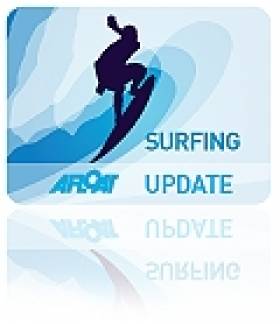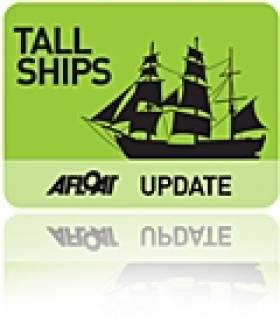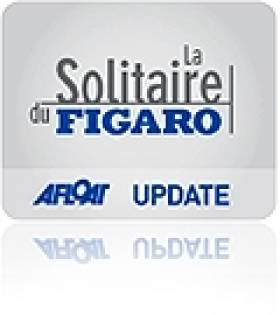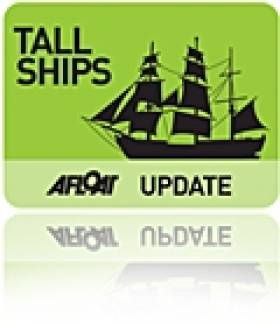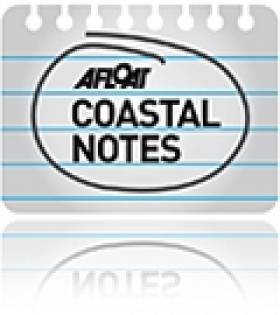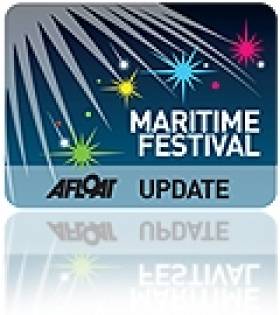Displaying items by tag: Festival
Surfing in the Suburbs This Weekend
Top surfers are headed to Ireland's most unlikely surfing festival this weekend in Dublin.
The Evening Herald reports that landlocked suburb of Blanchardstown has been transformed into a South Pacific-style beach for the surf event, designed to promote Ireland's global surfing charms among the Irish themselves.
Pro surfers will compete on a wave machine for the 53 Degrees North Open Surf Championship, but the same waves will also be open to beginners and younger surfing wannabes.
Herald.ie has more in the story HERE.
Collaboration with other sail training bodies to establish a regular Tall Ships festival in Ireland is one of the long term goals of Sail Training Ireland's new youth development manager.
As previously reported on Afloat.ie, Michael Byrne took up the new post at Dublin Port last week. His first tasks include fundraising, planning structures for membership, administering bursaries for sail training experience and preparing for the Tall Ships visit to Waterford next month.
But he has also signalled his intent in the long term to "co-operate and engage with other sail training associations and organisations with the view to establishhing a recurring STI-endorsed Tall Ships maritime festival every three-to-five years."
Byrne also hopes to sponsor and support sail trainees on boats around the world to give them invaluable experience at sea.
For more information visit www.irishsailtraining.com.
Dublin Bay it set to burst alive with 'joie de vivre' during the only foreign stopover in the world-famous Solitaire du Figaro yacht race.
Dun Laoghaire will be the only international stop in the race, considered the unofficial world offshore solo championship, between 11 and 14 August.
To celebrate the visit of the iconic 3,390km race, Dun Laoghaire Rathdown County Council (dlrcoco), the Dun Laoghaire Harbour Company and the National Yacht Club have joined forces to create the Festival des Bateaux.
The harbour will be a magnificent tapestry of colour as the boats arrive for this international event. Dun Laoghaire will be resplendent with fireworks, music and the sights, sounds, foods and ‘joie de vivre’ of France.
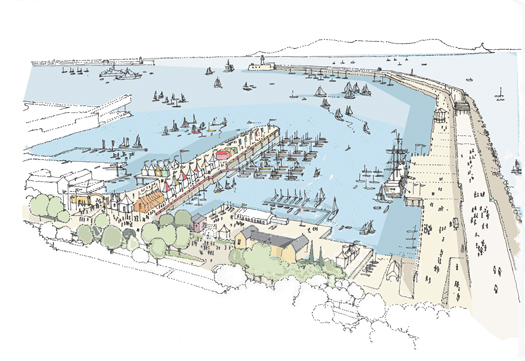
How Dun Laoghaire will look in August
Fireworks will light up the sky at 10pm on Friday 12 August. There will also be a festival village with public access to visiting boats, a colourful and authentic French market and exhibition, a festival stage at Harbour Plaza and activities throughout Dun Laoghaire, not to mention a spectacular farewell as the boats depart early on Sunday 14 August.
Meanwhile, plans to berth the 45 or so competitors expected are well underway, according to the National Yacht Club.
Funding was secured between dlrcoco and Fáilte Ireland, and the tender for the supply and delivery of 18x11.5m pontoons and associated service bollards was won by McNiven Marine, Irish agents for Ronautica Marine.
The gangway contract was secured by Tynes Gangway, and the last contract for the installation and de-commissioning of the infrastructure is currently underway.
Hamburg Gets Ready to Host World's Biggest Ports Festival
Billed as the world's greatest Port Festival, five of the world's largest and most beautiful tall ships – and at least one, the Mir, is also entered for the Tall Ships race in Waterford in June – have announced their presence at Hamburg next month.
Also coming to Hamburg is the Dar Mlodziezy, the Kruzenshtern, the Mir, the Sedov and the Sea Cloud. Each of these classic sailing ships, at home on the oceans of the world, is more than 100 metres in length, and captures the romance of maritime life.
The HAFENGEBURTSTAG HAMBURG has a thing or two to show off about given its large fleet of boats and Tall Ships that are gathering this year for the 822nd time. It's an opportunity to for Irish port festivals aiming to exploit the marine leisure resources around the Irish coastline.
The Sea Cloud, built in Kiel in 1931, and the largest private yacht in the world at the time, will be present at HAFENGEBURTSTAG HAMBURG for the first time, back in Hamburg for the first time in 33 years.
In Hamburg, there will be tall ships and cruise vessels, naval ships and emergency service boats, heritage and museum ships, sailing and motor yachts, dragon boats, and even a Roman galley. Altogether more than 300 vessels from the seven seas will be taking part, on display in their element before the fantastic backdrop of Hamburg's Landing Stages (Landungsbrücken) from 6 to 8 May at the world's greatest Port Festival.
The port is more lively than ever on the three days of HAFENGEBURTSTAG HAMBURG", says Captain Jörg Pollmann, in eager anticipation. "All those different ships and displays on the Elbe combine to form a unique celebration, which brings more than a million visitors to the Port of Hamburg every year." The guests from Germany and abroad can look forward to a superlative programme on the water, starting with the Grand Arrival Parade from 16:30 on Friday 6 May, and ending with the Grand Departure Parade at 17:30 on Sunday 8 May. There are also plenty of maritime attractions at the Oevelgönne Heritage Harbour and at the HafenCity traditional maritime harbour.
Meeting of the luxury liners
Visitors are warned that watching the six cruise ships arriving and departing on the three days of HAFENGEBURTSTAG HAMBURG may cause itchy feet and severe travelitis! The AIDAcara, AIDAblu and Mein Schiff 2 will be arriving on the Friday, the Amadea and the Fram, an expedition ship from Norway, will follow on the Saturday. And to top it all, the Queen Mary 2 will call in Hamburg on the Sunday. Costa Crociere, Europe's largest cruise ship operator, has just chosen Hamburg as the new home port for its cruise ship Costa Magica, and will join in the celebrations, sponsoring the great Costa Cruises Firework Display at 22:30 on Saturday 7 May, lighting up the night sky over the Elbe.
International navy visit and maritime adventurer from Norway
The world's greatest Port Festival traditionally brings a large naval contingent from Germany and elsewhere to Hamburg. From Germany there will be the frigate Sachsen, the fast patrol boat Hermelin and the mine hunters Homburg and Hameln. Norway, the partner country of HAFENGEBURTSTAG HAMBURG, will be represented by the frigate Otto Sverdrup, and Belgium by the mine hunters Crocus and Primula.
Norway, the partner country for this year's HAFENGEBURTSTAG HAMBURG, is also sending vessels of various designs and uses to visit Hamburg. The Arctic sailing ship Berntine will welcome visitors on board in the HafenCity Traditional Harbour. She was built at the Tromsøer shipyard in 1890 and restored several times since then. Sjøkurs is a training ship, built by the Hamburg shipyard Blohm & Voss in 1956 as the Postal Vessel Ragnvald Jarl. Today she accommodates 60 cadets on board, and travels around Norway and to other countries about ten weeks per year. The Fram, an expedition ship, will moor at the Hamburg Cruise Center in HafenCity. She is the latest addition to the Hurtigruten fleet and was christened by Norway's Crown Princess Mette Marit on 16 May 2007.
On duty for safety and security
The challenges of work on the high seas will be demonstrated by a range of modern working vessels from the fire services, fisheries protection, THW emergency services, the waterways police and the customs. The rescue cruiser John T. Essberger, owned by the German Lifeboat Institution DGzRS, will make its final appearance at HAFENGEBURTSTAG HAMBURG before decommissioning. It will then start on its final voyage to the Technical Museum of Speyer, where it will in future be moored as a museum vessel.
Dancing tug boats and heritage ships
One of the traditional highlights of the maritime programme is the unique Tug Boat Ballet at 17:00 on the Saturday, when the 5000 hp working tugboats perform their pirouettes on the Elbe.
A fleet of classic steamships will give a special birthday greeting from the Oevelgönne Heritage Harbour when they pass the Landing Stage at 16:00 on the Saturday, "full steam ahead" – not only puffing out clouds of smoke from their chimneys, but also releasing balloons from their decks.
On-board visits
Many of the vessels at HAFENGEBURTSTAG HAMBURG, including the tall ships and naval units, will hold Open Days for visitors to look around on board. Many of the launches and passenger ships also invite visitors to HAFENGEBURTSTAG HAMBURG to go on board and join in the Parades, or to tour the vessel.
Connemara Celebrates Sea Week
The annual Sea Week festival is underway in Connemara, with events taking place throughout the region till Monday 25 October.
Now in its 26th year, Connemara's Sea Week celebrates the marine environment with an eclectic mix of music, poetry, science and games for young and old alike.
Events this year include an art exhinition in Connemara National Park, a family fun day and mini regatta on Sunday 17 October, and a schools programme throughout the week featuring ecologists and storytellers.
Next weekend also sees the Sea Week Conference in Letterfrack on Saturday 23 October, which will examine the challenges facing the marine ecosystem and the implications for coastal communities around Ireland.
For more on the Sea Week festival programme visit www.ceecc.org
Sea Songs and Shanties Make a Winning Combination
A wonderful weekend of maritime celebration took place in Rosses Point in August. It was the inaugural festival of Shanty and Seafaring organised by a local committee. The event took place over three days in the in the village which is steeped in seafaring history. As well as the singing readings and poetry, traditional Rosses Point events such as the "Go as you Please" and "Maugherow Cup" were hotly contested.
Many people from the village who lost their lives at sea were remembered in a special Mass and wreath laying ceremony at the "waiting on the shore" monument.
The total amount raised over the weekend through bucket collections, bbqs, and purchase of a specially commissioned CD by the local group Ashore for a Loaf, was a staggering €4434.00.
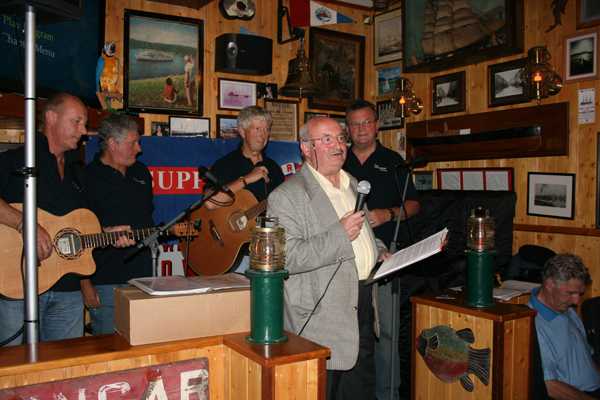
The Liverpool crew
The cheque was presented to the RNLI fundraising Chairman Pat Carter by Ann Mannion on behalf of the Shanty Festival Committee.In accepting the cheque Pat Carter congratulated the Shanty committee on a wonderful event and thanked them for their most generous donation to the RNLI. Pat Carter went onto thank the local people who as ever give very generously the RNLI Sligo Bay. The RNLI lifeboat service is funded entirely through voluntary donations.
The Committee have just announced that they will be holding an even bigger and better Shanty & Seafaring Festival in mid June 2011


























